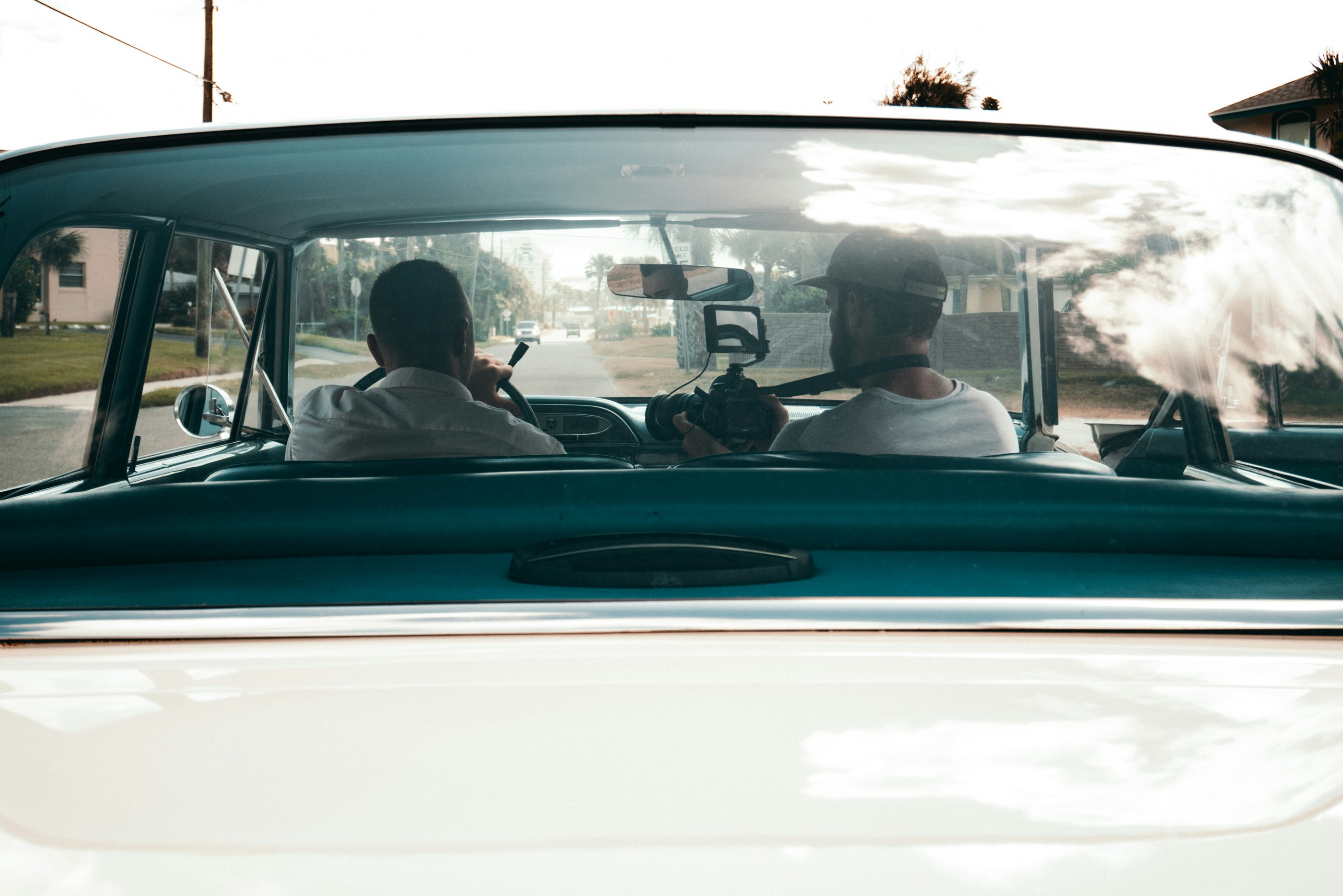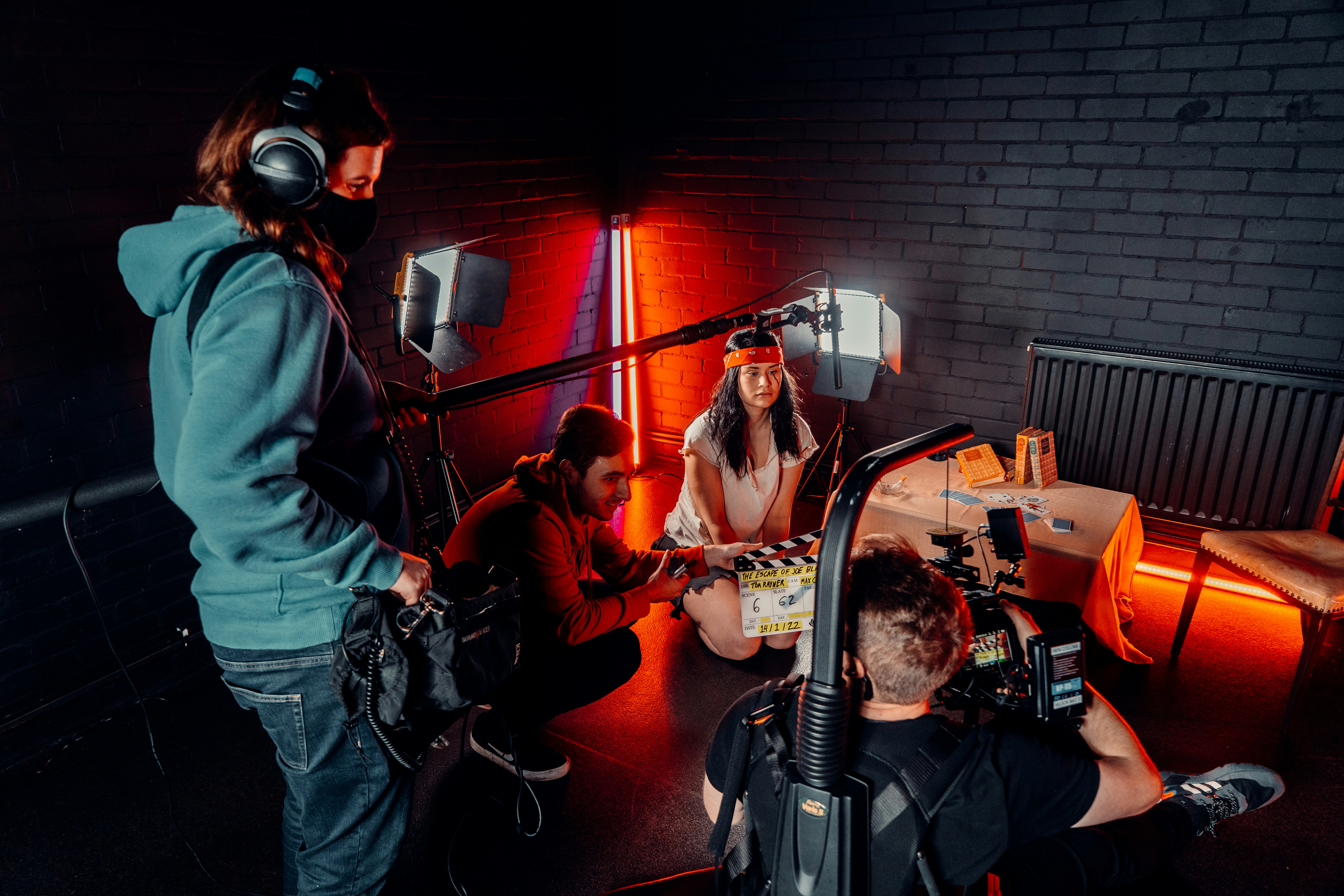How to Produce a Short Film: A Step-by-Step Guide
by WriteSeen
Creating a short film is more than just hitting the record button—it's a journey of storytelling, strategy, and teamwork. Many budding filmmakers feel overwhelmed by the process.
Don't worry; we've got a streamlined guide just for you, focusing on:
- How to produce a short film efficiently, from idea to premiere.
- Crafting compelling, emotionally resonant stories that captivate audiences.
- Assembling and managing a dynamic crew for seamless execution.
Develop Your Concept
Creating a short film starts with a compelling concept, the backbone of the entire production process. Crafting an engaging story draws viewers in and sets your project apart. You don't just need an idea. It needs a unique angle, letting your voice shine through a singular theme or character.
Building Your Story
Effective storytelling grabs attention. Successful filmmakers emphasize stories with emotional depth—audiences remember those that resonate. We're stepping into a world where emotional connection isn't optional.
- Character-Centric Stories: Characters drive your narrative. Developing rich, relatable personas enhances engagement.
- Themes with Impact: Choose a theme that speaks to universal truths or untapped niches to provide a fresh perspective.
Setting It Apart
In the crowded landscape of short films, unique storytelling angles are golden.
- Leverage Innovation: Generative AI offers new ways to reframe traditional narratives or spark innovative ideas, allowing you to stand out.
- Adapt to Trends: With rapidly evolving tech trends, aligning your story with current societal shifts can exponentially extend your film's reach.
Staying true to your creative vision while adapting to global trends ensures your concept is both relatable and fresh. Keeping curiosity alive, we move on to the nitty-gritty of scriptwriting.

Write the Script
Your script is the nexus of your short film. It embodies your concept and transforms it into something visual. Every word matters—tight structure, sharp dialogue, and precise pacing are your allies.
Script Structure Essentials
Hook audiences from the get-go. Swift action and an engaging opening sequence are key, as most viewers decide quickly if they'll stay for the ride.
- Precision in Dialogue: Dialogue should drive the plot and reveal character. Keep it snappy to maintain momentum.
- Pacing Excellence: Effective pacing ensures ebb and flow. Your script should have natural highs and lows, guiding viewer engagement.
Tools of the Trade
Scriptwriting tools streamline this process. Consider using industry leaders like Final Draft or Celtx. They offer the bells and whistles needed to finesse your screenplay.
Generative AI is a wildcard, providing unexpected dialogue tweaks or plot twists, keeping your narrative nimble and innovative. Collaborate in real time without geographical boundaries through cloud technology. This groundbreaking tech novelty ensures your creativity knows no bounds. Let's shift gears as you rally your ensemble cast for your vision.
Assemble Your Crew
Rallying a capable crew is just as crucial as developing your story. The right mix of professionals can elevate your project, turning a modest idea into a visual masterpiece. Your choices determine the vibes on set and, ultimately, the film's success.
Crew Composition
Each role, from director to sound engineer, fulfills distinct functions that contribute to the whole.
- Building Relationships: Finding skilled partners with whom you can share a vision is game-changing. Utilize networking and social media to scout professionals whose expertise aligns with your project.
- Experience Counts: A seasoned crew can navigate challenges more smoothly. Prioritize experience when possible.
Collaborating with Purpose
Engage remote collaboration tools to unite team members around the world, boosting synergy and efficiency.
- AI Integration: AI platforms enhance task management and streamline productivity. Projects run smoother, freeing creative energy for the real work.
This foundation leads us seamlessly into budgeting—where dream and reality meet. Unlock the possibilities that financial planning offers.

Plan Your Budget
Crafting your budget is where vision and reality meet. Effective budgeting helps avoid unpleasant surprises.
Budget Breakdown
Tailor your budget to your film's size and scale, with costs ranging anywhere from a few hundred to several thousand dollars.
- Crowdfunding: Platforms like Kickstarter kickstart projects that are well-prepared and offer transparency. Brands sometimes partner with filmmakers, cutting costs while increasing exposure.
- Digital Solutions: Keep budgeting streamlined. Payment and budget apps provide clarity and organization during production.
Financial Precision
Predictive AI offers accurate projections, minimizing waste and unnecessary expenses. It’s no longer about tight-fisted, anxious budgeting. It’s about smart planning for creative freedom.
By smartly managing your finances, your vision gains clarity, paving the way for location scouting and ensuring seamless scene-setting for your short film.
Secure Locations and Permissions
Locations transform your narrative into reality. They lend authenticity and support storytelling through a visual landscape that breathes life into your script. Efficient scouting is essential.
Location Scouting
The right setting can make or break your short film.
- Visual Storytelling: Around 20-30% of your film's success hinges on well-chosen locations. They carry enormous weight in conveying themes and emotions.
- Early Permits: Securing permits early saves future headaches. City permits can cost up to $500; ensure these expenses are factored into your budget.
Navigating Logistics
Factors like utilities can economize your budget. Engage local officials early on, using AI tools for real-time updates and permit processing to stay ahead.
Efficient location management sets the stage for every other detail of your film. From scripts to budgeting to the very locations you choose, every step solidifies the foundation for cinematic success.
Schedule Your Shoot
Creating a rock-solid schedule is the linchpin of a successful production. Efficient time management aligns logistics and talent, keeping everything on track. Delays cost time, and finances—avoid them with a robust plan.
Building the Schedule
Planning ensures that everyone knows where they need to be. A well-structured timetable not only saves production time but ensures all elements come together smoothly.
- Avoid Delays: With 50% of overruns caused by poor planning, it's important to anticipate changes, like unpredictable weather, by incorporating backup days into your schedule.
- Detailed Timelines: A specific, detailed schedule reduces production time by up to 25%, ensuring everyone can see what’s next.
Embracing Technology
Keeping your team connected in real-time boosts efficiency. Cloud-based scheduling tools help manage changes on the fly.
- AI for Anticipation: AI analytics predict and resolve potential conflicts ahead of time, smoothing out production hiccups before they become disruptions.
This foresight means you're always ahead and prepared, creating a dynamic environment that turns hiccups into minor nudges. We’re ready to roll cameras and capture what planning has staged.
Execute the Production
With preparation in place, it’s time to start filming. Filming days are the realization of your concept, where preparation meets action. Adaptability and positivity create an atmosphere conducive to productivity and creativity.
On-Site Atmosphere
The environment on set mirrors the energy of the cast and crew. A positive atmosphere can boost productivity by 15%, fostering better artistic output.
- Open Communication: Resolve issues swiftly. Keep lines of communication wide open for real-time problem-solving.
- Adaptability: Be ready for gear failures or unexpected changes. Flexibility is your ally against unforeseen issues.
Tech in Motion
Logistical technology enhances efficiency during filming and supports technical needs.
- Visualize with Augmented Reality: Use AR tech to pre-visualize scenes, ensuring alignment with the original vision.
- Self-Driving Support: Utilize cutting-edge tech like autonomous support vehicles to advance film logistics, reducing downtime between setups.
These elements turn potential roadblocks into mere stepping stones, letting your team focus on creativity rather than logistics. As the filming wraps, focus shifts toward crafting the final product through post-production.
Edit Your Film
Editing turns raw footage into a cohesive story, blending narratives into a seamless experience. It's where you refine the vision, incorporating sound, color, and effects.
Crafting the Narrative
In post-production, the story finds its rhythms. It's a mix of technical skill and creative intuition.
- Pro Software Solutions: Use top-notch editing software like Adobe Premiere Pro or DaVinci Resolve—indispensable for precision in editing.
- Color and Sound: Up to 75% of audiences value well-graded films, making professional color work vital. Post-production costs here can consume 20% but are key for polish.
Technology that Enhances
Editing is where technology can amplify creative vision, offering new tools for polish and refinement.
- AI-Driven Effects: Use AI to sculpt innovative soundscapes or effects, pushing the boundaries of creativity.
- Collaboration in the Cloud: Enable global teams to collaborate without hindrances, ensuring a seamless workflow.
After editing, your film transforms from scenes to story, ready to be shown to the world and inviting engagements from varied audiences.

Distribute Your Short Film
With your short film polished to perfection, the next step is sharing it. Maximizing exposure through various platforms and festivals elevates your film’s potential reach.
Effective Distribution Strategies
Reaching your audience demands a thoughtful approach involving multiple platforms and venues.
- Engagement Through Festivals: Film festivals significantly increase exposure—online views can double after a festival run.
- Harness Social Media: Strategic social media campaigns drive up to 40% of viewership, making them essential tools.
Building an Online Presence
A strong digital footprint is essential for broad reach.
- Develop a Film Website: A well-designed website grabs attention and boosts engagement with your audience.
- AI-Powered Marketing: Use AI-driven marketing to delve into specific audience segments, expanding your reach efficiently.
Distribution becomes a celebration of your hard work and artistry, culminating in connections with audiences worldwide. Each step aligns with your initial vision to captivate and engage. Remember, with WriteSeen, your originality thrives and reaches far beyond expectations.
Conclusion
Producing a short film is a journey through creativity, precision, and collaboration. Whether it's refining your concept, scripting each line, or bringing together a talented crew, every step is vital. By planning carefully, making the most of technology, and sharing your story strategically, you've not just created a film—you're part of a global creative community. Let your creativity lead the way, and remember, every step counts toward turning your vision into reality. Embrace the process, and await the next cinematic challenge.
TAGS